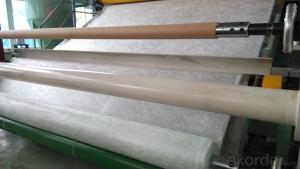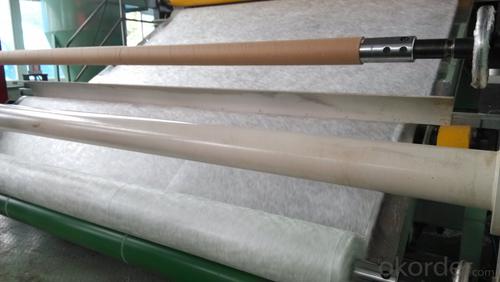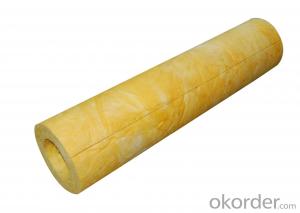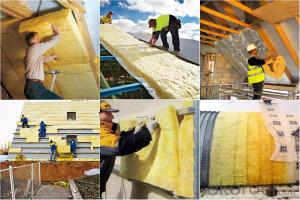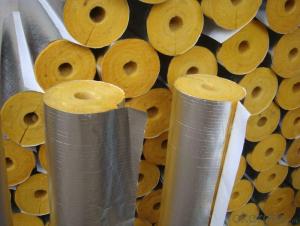E-Glass Emulsion Chopped Strand Mat
- Loading Port:
- China Main Port
- Payment Terms:
- TT OR LC
- Min Order Qty:
- -
- Supply Capability:
- -
OKorder Service Pledge
OKorder Financial Service
You Might Also Like
E-Glass Emulsion Chopped Strand Mat |
E-Glass Emulsion Chopped Strand Mat is made of randomly distributed chopped strands held tighter by a emulsion binder. It is compatible with UP, VE, EP resins. The roll width ranges from 50mm to 1270mm. special requirements may be available upon request. |
Area Weigh(g/m2) | Roll Width(mm) | Resin Compatibility | Product Features | Applications |
225, 300, 450, 600, 900 | 1040, 1270,1524 | UP, VE, EP | High tensile strength, allowing for use in hand lay-up process to produce large-area parts; No airborne fiber when operating; Good wet-through and fast wet-out in resins, rapid air lease; High mechanical strength; Superior acid corrosion resistance | hand lay-up, filament winding, compression molding and continuous laminating processes |
225, 300, 450, 600, 900 | 1040, 1270,1524 | UP, VE, EP | Good conformability; Good wet-through and fast wet-out in resins, rapid air lease, reducing rolling out time and increasing productivity; Low resin consumption; High mechanical strength of the conposite product; Superior acid corrosion resistance | hand lay-up, filament winding, continuous laminating |
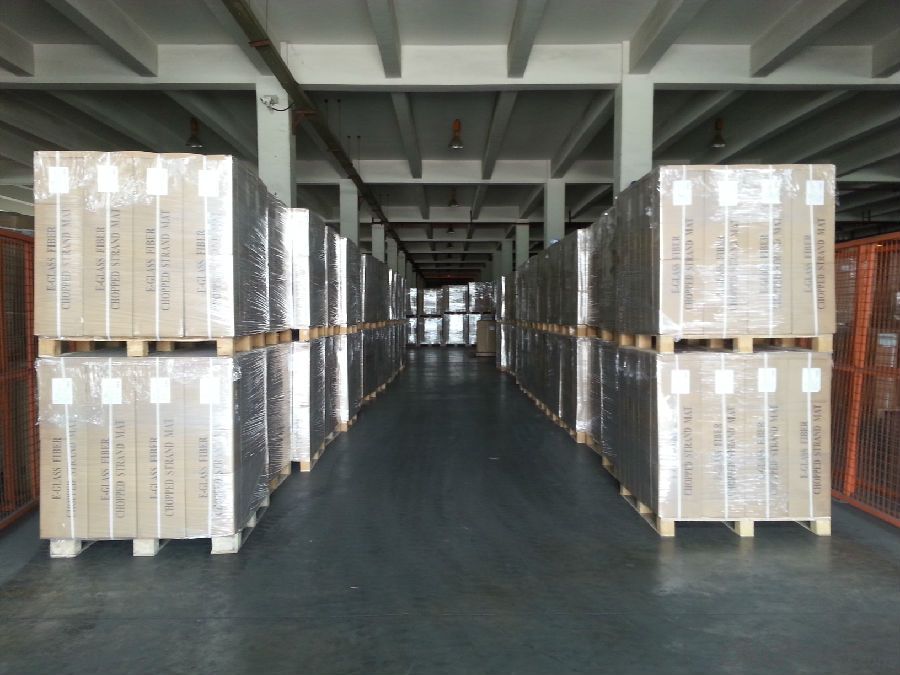

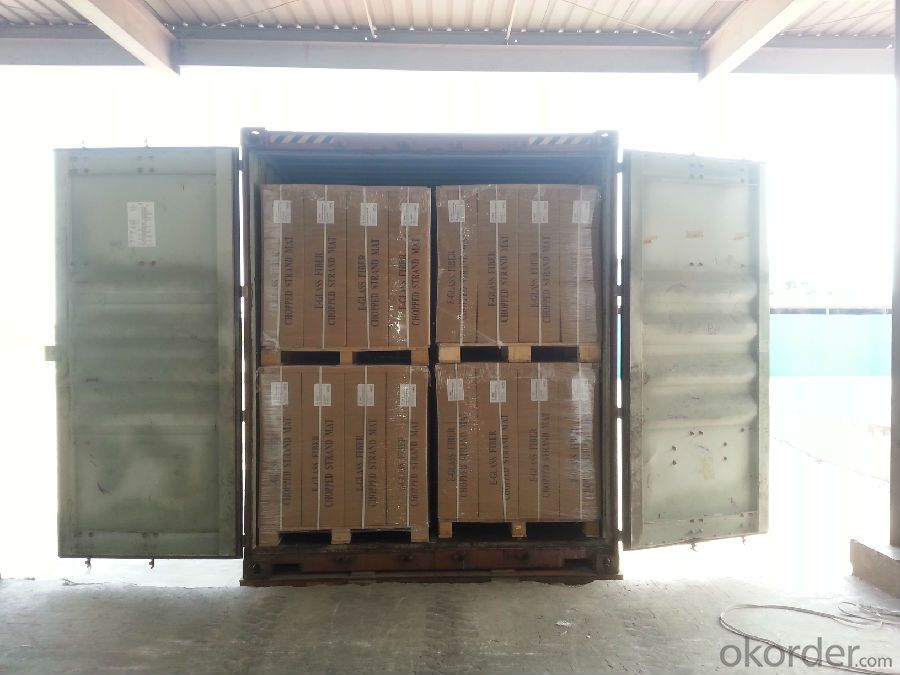
- Q:How does fiberglass mat tissue compare to polyurethane insulation?
- In the construction industry, fiberglass mat tissue and polyurethane insulation are commonly used materials, but they differ in terms of their composition, performance, and applications. Fiberglass mat tissue consists of woven glass fibers and is primarily used to reinforce various materials, including roofing, wall insulation, and fiberglass composites. Its main advantage lies in its high tensile strength, which provides excellent structural support and durability. Additionally, it is resistant to fire and chemicals, making it a suitable option for applications where safety is a concern. In contrast, polyurethane insulation is a foam material known for its exceptional thermal insulation properties. It is frequently utilized in buildings to minimize heat transfer and enhance energy efficiency. With its high R-value, indicating its ability to resist heat flow, it is particularly well-suited for insulation purposes, especially in regions with extreme temperature conditions. Furthermore, polyurethane insulation is lightweight, easy to install, and exhibits good moisture resistance. When comparing fiberglass mat tissue to polyurethane insulation, it is crucial to consider the specific requirements of the project. Fiberglass mat tissue is best suited for applications that necessitate structural reinforcement, such as roofing and composite materials. Its strength and durability make it the preferred choice for such applications. On the other hand, polyurethane insulation excels in terms of thermal insulation. It offers superior heat resistance and possesses a higher R-value compared to fiberglass mat tissue. Therefore, if the primary objective is to enhance energy efficiency and minimize heat transfer, polyurethane insulation would be the superior option. In conclusion, fiberglass mat tissue and polyurethane insulation each have their own advantages and disadvantages. The decision regarding which material to use should be based on the specific needs of the project, whether it be structural support or thermal insulation requirements. Consulting with a professional and taking into account factors such as budget, environmental impact, and local building codes will aid in making an informed decision.
- Q:Are there any environmental considerations when using fiberglass mat tissue?
- Yes, there are several environmental considerations when using fiberglass mat tissue. Firstly, the production of fiberglass mat tissue involves the use of energy and resources. The manufacturing process requires the extraction of raw materials, such as silica sand, limestone, and soda ash, which are non-renewable resources. The energy-intensive process of melting these materials at high temperatures also contributes to greenhouse gas emissions. Additionally, the production of fiberglass involves the use of chemicals, such as resins and binders, which can be harmful to the environment if not properly managed. These chemicals can potentially leach into water bodies or soil if not handled and disposed of correctly. Furthermore, fiberglass mat tissue is not biodegradable. Once it reaches the end of its lifespan, it can take hundreds of years to break down in a landfill. Improper disposal of fiberglass mat tissue can lead to environmental pollution and contribute to the growing problem of waste management. Lastly, the use of fiberglass mat tissue in certain applications, such as insulation or construction, can have energy efficiency implications. While fiberglass is an effective insulator, its production and installation may require additional energy inputs, such as the use of fossil fuels for transportation or heating during installation. To mitigate these environmental considerations, it is important to promote sustainable practices in the production and use of fiberglass mat tissue. This can include implementing energy-efficient manufacturing processes, reducing the use of harmful chemicals, promoting recycling or reuse of fiberglass materials, and exploring alternative materials that have a lower environmental impact.
- Q:How is fiberglass mat tissue different from fiberglass cloth?
- Fiberglass mat tissue and fiberglass cloth differ primarily in their construction and application. Fiberglass mat tissue is a non-woven material made of randomly oriented glass fibers bonded together with a binder. It is typically thinner and lighter than fiberglass cloth. Mat tissue is commonly used as a reinforcement layer in composite materials, providing strength and stability. On the other hand, fiberglass cloth is a woven fabric made of individual glass fibers arranged in a grid-like pattern. It is generally thicker and heavier compared to mat tissue. Fiberglass cloth is commonly used for applications requiring high strength and stiffness, such as boat building, aerospace, and automotive industries. In summary, the key differences between fiberglass mat tissue and fiberglass cloth lie in their construction, weight, and intended application. Mat tissue is a non-woven, lighter material used for reinforcement, while cloth is a woven, heavier fabric suitable for applications requiring high strength.
- Q:Can fiberglass mat tissue be used for insulation in chemical storage tanks?
- Indeed, insulation in chemical storage tanks can be achieved using fiberglass mat tissue. The exceptional insulation properties of fiberglass render it a fitting substance for tanks that house chemicals. Typically composed of finely interwoven glass fibers, the fiberglass mat tissue constitutes a robust and long-lasting material. Its application to the inner walls of the tank effectively insulates and thwarts heat transfer. Furthermore, fiberglass exhibits corrosion resistance and can endure the detrimental effects of the chemicals commonly stored within these tanks, making it an optimal option for insulation in chemical storage tanks.
- Q:How does fiberglass mat tissue perform in high temperatures?
- Fiberglass mat tissue performs well in high temperatures as it has a high melting point and excellent heat resistance. It retains its strength and structural integrity even when exposed to elevated temperatures, making it suitable for various applications in high-temperature environments.
- Q:How does fiberglass mat tissue compare to cellulose insulation?
- Fiberglass mat tissue and cellulose insulation differ in terms of material composition and insulation properties. Fiberglass mat tissue is made from fine glass fibers, while cellulose insulation is composed of recycled paper fibers treated with fire-retardant chemicals. Fiberglass mat tissue offers higher R-value, meaning it provides better thermal insulation and energy efficiency. Additionally, it is resistant to moisture and does not promote mold growth. On the other hand, cellulose insulation is more affordable, environmentally friendly, and provides better sound insulation. Ultimately, the choice between the two depends on specific insulation needs, budget, and environmental considerations.
- Q:Is fiberglass mat tissue suitable for aerospace repairs?
- Yes, fiberglass mat tissue is suitable for aerospace repairs. It is a lightweight and strong material that can be used to reinforce and repair aerospace structures. It provides excellent strength-to-weight ratio and has good resistance to corrosion and heat. Additionally, it is easy to work with and can be molded into various shapes to fit the specific repair requirements.
- Q:Can fiberglass mat tissue be used for creating molds?
- Using fiberglass mat tissue for creating molds is not possible. Fiberglass mat tissue is primarily utilized as a reinforcement layer in fiberglass composite applications due to its thin and lightweight nature. It is not intended to be used as a material for making molds. Instead, molds are commonly made using silicone, resin, or plaster, as these materials have the capacity to capture intricate details and offer a polished surface finish.
- Q:How is fiberglass mat tissue used in the production of composite panels?
- Due to its unique properties and versatility, fiberglass mat tissue is commonly utilized in the manufacturing of composite panels. Its role as a reinforcement material contributes to the enhancement of strength, durability, and overall performance of these panels. In the production process, a sandwich structure is typically formed by incorporating fiberglass mat tissue between layers of resin. This tissue serves as a reinforcing layer, providing added strength and stability to the panels. It effectively distributes applied stress evenly across the panel, thereby reducing the likelihood of cracks or fractures. One notable advantage of fiberglass mat tissue is its ability to enhance the impact resistance of composite panels. By absorbing and dispersing energy when subjected to external forces, it diminishes the risk of damage or breakage. This characteristic makes it a highly suitable choice for applications that necessitate high impact resistance, such as automotive parts, boat hulls, or aircraft components. Furthermore, fiberglass mat tissue exhibits excellent resistance to corrosion, making it appropriate for usage in environments with high humidity or exposure to chemicals. It acts as a protective barrier, shielding the composite panels from moisture and corrosive substances. As a result, the panels enjoy an extended lifespan and sustained performance. Moreover, fiberglass mat tissue possesses exceptional moldability, which facilitates the creation of intricate shapes and designs. It can be effortlessly molded into various forms, thus offering flexibility in the production process and enabling the fabrication of customized composite panels tailored for specific applications. In summary, fiberglass mat tissue is a vital component in the manufacturing of composite panels. It reinforces the structure, enhances impact resistance, improves corrosion resistance, and enables design flexibility. Its unique properties have made it a favored choice in industries such as construction, transportation, aerospace, and marine, where the demand for high-performance and long-lasting composite panels is prevalent.
- Q:Is fiberglass mat tissue suitable for oil and gas applications?
- Indeed, fiberglass mat tissue proves to be fitting for oil and gas applications. This material, renowned for its lightweight yet robust nature, demonstrates resilience in the face of the demanding conditions that typically arise within the oil and gas sector. Its extraordinary resistance to chemicals, including oil and gas, renders it an optimal selection for endeavors like pipeline insulation, tank lining, and filtration systems. Moreover, fiberglass mat tissue showcases exceptional resistance to moisture absorption, possesses commendable thermal insulation characteristics, and can be effortlessly molded into diverse shapes and forms, thereby establishing itself as a versatile substance suitable for a wide range of oil and gas applications.
1. Manufacturer Overview |
|
|---|---|
| Location | |
| Year Established | |
| Annual Output Value | |
| Main Markets | |
| Company Certifications | |
2. Manufacturer Certificates |
|
|---|---|
| a) Certification Name | |
| Range | |
| Reference | |
| Validity Period | |
3. Manufacturer Capability |
|
|---|---|
| a)Trade Capacity | |
| Nearest Port | |
| Export Percentage | |
| No.of Employees in Trade Department | |
| Language Spoken: | |
| b)Factory Information | |
| Factory Size: | |
| No. of Production Lines | |
| Contract Manufacturing | |
| Product Price Range | |
Send your message to us
E-Glass Emulsion Chopped Strand Mat
- Loading Port:
- China Main Port
- Payment Terms:
- TT OR LC
- Min Order Qty:
- -
- Supply Capability:
- -
OKorder Service Pledge
OKorder Financial Service
Similar products
New products
Hot products
Hot Searches
Related keywords
